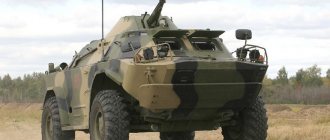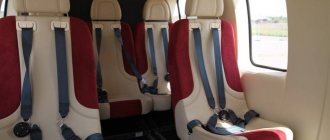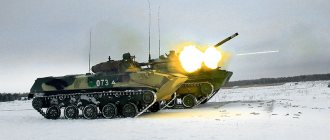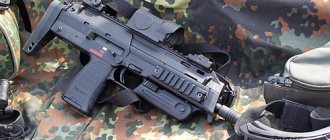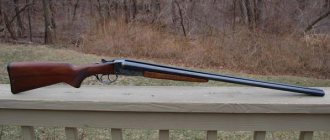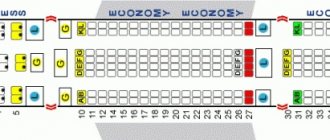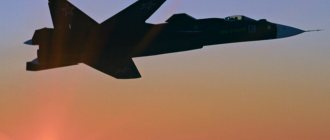Mini-review of the Real sword Type 97 assault rifle
All products undergo pre-sale preparation, as well as full performance testing and quality control, after which they are supplied with protective tapes and seals.
Warranty service is carried out at the service center of our online store Airsoft-rus at the address: Ekaterinburg, st. Khokhryakova, 72.
The warranty period is 14 (fourteen) calendar days and is calculated from the moment of actual transfer of the goods to the buyer (purchase).
Returns or exchanges of goods are carried out within 14 days from the date of actual transfer of the goods to the buyer (purchase of the goods), provided that the goods have not been used, have no mechanical damage or contamination, the consumer properties, branded packaging and proper appearance, factory seals have been preserved and labels, protective tapes and seals, as well as in the presence of documents confirming the fact of purchasing this product in our online store.
The initial speed of the ball indicated on the website is an indicator obtained by test shooting one unit of each machine model. The store does not guarantee the speed of the ball as indicated on the website, since this is not guaranteed by the manufacturer of the product.
If you need to know this indicator in advance, please indicate this in the comments to the order.
Delivery of goods for repair, replacement and (or) return to the consumer is carried out at the expense of the buyer.
The following are not subject to free warranty service:
- Products with mechanical or thermal damage; with damage caused by improper conditions of transportation, installation and storage; operation (connection) in an abnormal mode not provided by the manufacturer; damaged by external circumstances (power surges, natural disasters, etc.).
- Products with missing or damaged protective tapes or seals, with signs of tampering, with factory serial numbers, seals and holograms re-taped or removed.
- Products with traces of exposure to foreign objects, substances, liquids, insects, etc.
- Product with traces of unauthorized intervention (connection in improper conditions) and (or) repair (traces of opening, handicraft soldering, traces of replacement of microcircuits, etc.).
- A product that has self-diagnostic means indicating improper operating conditions.
- Goods that have received defects resulting from the use of low-quality or worn-out accessories available to the buyer or purchased from third parties.
- Connecting cables, consumables, accessories.
- Airsoft drives serviced outside the Airsoft-rus specialized center at the address: Ekaterinburg, st. Khokhryakova, 72.
- Batteries and chargers.
- Guns and drives (gas) operating with Power Gaz, Red Gaz, all other gases and gas cylinders, except Green Gas.
The seller is not responsible for damage caused to the buyer or third parties as a result of improper use of airsoft equipment, its use without the use of protective equipment, or caused as a result of intentional actions of other persons, as well as in the event of unauthorized intervention in the design of the equipment.
Anti-tank rifle Type 97 / Type 97 (Japan)
Type 97 anti-tank rifle without magazine.
Type 97 anti-tank rifle, with magazine and removable carrying handles.
| Type | automatic |
| Caliber | 20×125 |
| Weight without cartridges | 50 kg |
| Length | 2100 mm |
| Barrel length | 1250 mm |
| Magazine capacity | 7 rounds |
| Armor penetration (Distance / Angle of contact / Penetration) | 250 m / 90o / 30 mm |
The Japanese Type 97 anti-tank rifle was put into service in 1937 (2597 according to the then Japanese calendar). This anti-tank gun was created specifically to fight tanks, and until the end of World War II, it allowed the Japanese infantry to more or less successfully fight light tanks and landing craft (boats and amphibious armored personnel carriers) of the US Marine Corps, and also, thanks to the presence of assortment of high-explosive fragmentation shells, with various field fortifications and firing points. Against medium American tanks such as the M4 Sherman, the Type 97 anti-tank rifle was ineffective. The gun was distinguished by its significant mass (the weight of the gun with a full magazine and removable armored shield reached 68 kg), so taking into account the short stature of the Japanese soldiers of that time, it was necessary to develop special removable handles for carrying it like a stretcher, allowing the gun to be carried by three or four soldiers.
The Type 97 anti-tank rifle uses gas-operated automatics with two gas pistons located under the barrel. The barrel is locked using a locking wedge located in the bolt and able to move in a vertical plane. To lock, the wedge rises upward under the influence of the bevels on the bolt frame and engages the bolt with the receiver. After the shot, under the action of the gas piston, the bolt frame begins to move back and its bevels lower the wedge, unlocking the bolt. Shooting is carried out from an open bolt, with automatic fire only. The cartridges were fed from detachable box magazines attached to the top. To reduce the recoil felt by the shooter, the barrel and receiver have the ability to roll back relative to the body of the weapon, compressing the spring buffer in the rollback. There is a muzzle brake on the barrel of the gun. Shooting is carried out from a support, using a bipod mounted in the front of the receiver, and an additional adjustable support under the butt. The sight is adjustable, with range settings from 100 to 1000 meters; it is also possible to install an optical sight. The Type 97 anti-tank rifle was also equipped with a removable armored shield and removable carrying handles.
Description
"Type 97" uses gas-operated automatics with two gas pistons. The barrel is locked by a wedge moving in a vertical plane. Shooting is carried out from an open bolt. Burst shooting is possible. Box magazines for 7 rounds were attached to the top. As in some other anti-tank guns (for example, in the English Boys or the German PzB-38), a kind of fire monitor is used, when the barrel and receiver roll back relative to the rest of the body after being fired. This compresses the spring buffer, reducing recoil by approximately 60%. However, this still turned out to be not enough: there were frequent cases of collarbone fractures among shooters[2].
Due to the significant mass of the weapon, amounting to 68 kg with full ammunition and armored shield, special removable handles were used for carrying, allowing the Type 97 to be moved by three or four people like a stretcher.
At a right angle, an armor-piercing bullet fired from a Type 97 penetrates 30 mm of armor at a range of 250 m (according to other sources [2] only at a range of 100 m). This allowed Japanese soldiers to be quite effective at destroying lightly armored vehicles of the USSR and the USA, but was not sufficient to destroy medium tanks, such as the M4 Sherman. High-explosive fragmentation ammunition was used to combat manpower.
Shooting is carried out from a height-adjustable bipod and a support under the butt. The butt had a rubber shock absorber[2], a shoulder pad and a cheek piece.
Additionally, an armored shield[4], a light wheeled carriage (the total weight of the system in this case was 68 kilograms) and an optical sight can be installed on the weapon.
In May - August 1942, during the fighting in the Solomon Islands, Type 97 anti-tank rifles were used by Japanese army units as an anti-landing weapon, and they fired at landing boats approaching the shore [3].
Technical characteristics of the 97 class sewing machine
Technical characteristics: Stitch length 2.0…4.0 mm; Maximum presser foot lift 6.0 mm; The maximum thickness of the processed material is 4.0 mm; Numbers of needles used: 0052-02-75; 0052-02-90; 0052-02-100; 0052-02-110
When changing the needle, please note that the package should be marked with the needle type - 0052. Needles with this marking are intended for a class 97 sewing machine. This type of needle is slightly shorter than that of a 1022 or 22 class sewing machine, and the bulb is noticeably thinner. It is important to pay attention to this when purchasing new needles and indicate the exact marking, namely 0052-02. Sewing needles thicker than 110 number are not allowed to be used on the machine, just like needles of other brands. However, if desired, you can reconfigure the position of the needle bar and then the needles can be placed longer. Well, in order to install a needle from class 22, you need to replace the needle bar itself, which only a master can do.
Description[edit | edit code]
The conversion of the Type 38 rifle into the Type 97 was carried out by installing an optical sight with a magnification of 2.5X or 4X. The optical sight is shifted to the left, which is explained by the desire of the designers to preserve as much as possible the high combat qualities of the weapon, since with this arrangement of the optics it is possible to load the magazine from a standard clip, and not from one cartridge at a time. The bolt had a movable cover made of bent sheet steel, designed to protect the bolt from dirt and moisture, which, however, soldiers often removed because it made unmasking sounds when reloading. The fuse was located at the rear end of the bolt and looked like a round cover. Thanks to a special indicator groove, the position of the fuse could be determined both visually and by touch. The shutter features a downward-curved handle. The rifle received a lightweight stock and a mount for a monopod bipod. A bayonet could be mounted on the rifle. The rifle was one of the very few systems that used a segmental rifling system: the rifling was a segment of a circle, together the rifling formed a kind of chrysanthemum.
Due to the long barrel length and moderate cartridge power, the muzzle flash when fired was almost invisible.
Parameters for setting hook and needle gaps
The timeliness of the approach of the shuttle nose to the needle is regulated by turning the shuttle mechanism on the axis, after loosening the screws securing the shuttle device. When lifting the needle from its lowest position to a distance S = 1.9...2.1 mm, the nose of the shuttle should align with the trajectory of the needle. The gap between the nose of the shuttle and the needle is adjusted after loosening the screw securing the Z sleeve and axial displacement of the Z sleeve, together with the shuttle device. The gap between the needle blade and the nose of the shuttle should be approximately 0.05... 0.1 mm. See also Class 1022 Industrial Machine.
Shaped type of thread take-up mechanism
The 97 class sewing machine uses a rotary or so-called shaped rotating type of thread take-up mechanism. Thread take-up A through hole B is put on the axis of pin M of crank C and is attached to the pin through sector S with screws E. A knife for cutting thread is attached to the front board of the machine sleeve with a screw and nut. The rotary, shaped thread take-up mechanism provides for adjustment of the timeliness of tightening the thread in the stitch. This is done by turning (left, right) the thread take-up after loosening the screws E. When turning the thread take-up A counterclockwise, the stitch is tightened earlier. Delay in tightening the stitch may cause the bobbin thread to be caught again. This design feature makes it somewhat difficult to adjust stitch formation, but a well-tuned machine sews almost all fabrics, including knitted ones, flawlessly.
Shuttle drive 97 - A class is connected to the main shaft by a toothed belt
The 97-A class machine has the same type of shuttle mechanism as the 1022, 22 class, but there are some differences. One of them is that the main upper shaft is connected by a belt to the lower shaft of the shuttle mechanism. This is the reason for the low noise operation of the machine. A lower gear drum is fixed to the lower camshaft, which meshes with gear O. It has a single design with shuttle shaft W. Shuttle shaft W rotates in two bushings pressed into bushing Z, secured with a screw in the machine platform. A shuttle device is installed on the left end of shaft W and secured with two screws. The shuttle, through toothed belt and gear transmissions, receives rotation in the same direction as the machine pulley, but for one revolution of the main shaft it makes two revolutions.
Threading the upper thread of a class 97 sewing machine
The needle thread is passed through the holes of thread guides 1, 2 on the machine sleeve. Next, the thread is passed through slot 5 on the front cover of the machine. Take the thread out of the slot 5 through the hole 8 of the front board, and pass it between the washers 9 of the tension regulator. Place the compensation spring behind the hook and circle the top of corner 10. Then, insert the needle thread into the gap between the front board and ring 3 and throw it onto the cam surface of the thread take-up 4. Next, take it out from under the ring 3 and tuck it into the thread guide 6 on the front board and into the wire thread guide installed on the needle bar. And finally, needle 7 is inserted into the eye.
After threading the thread, leave a free end of the thread 70...80 mm long, which is necessary for pulling the shuttle thread. Threading must be done strictly according to the instructions. If the threading is incorrect, the class 97 sewing machine immediately stops working. By the way, one of the inconveniences of the machine is that the seamstress does not immediately notice the break in the thread and the thread is wound onto the cam thread take-up at lightning speed.
